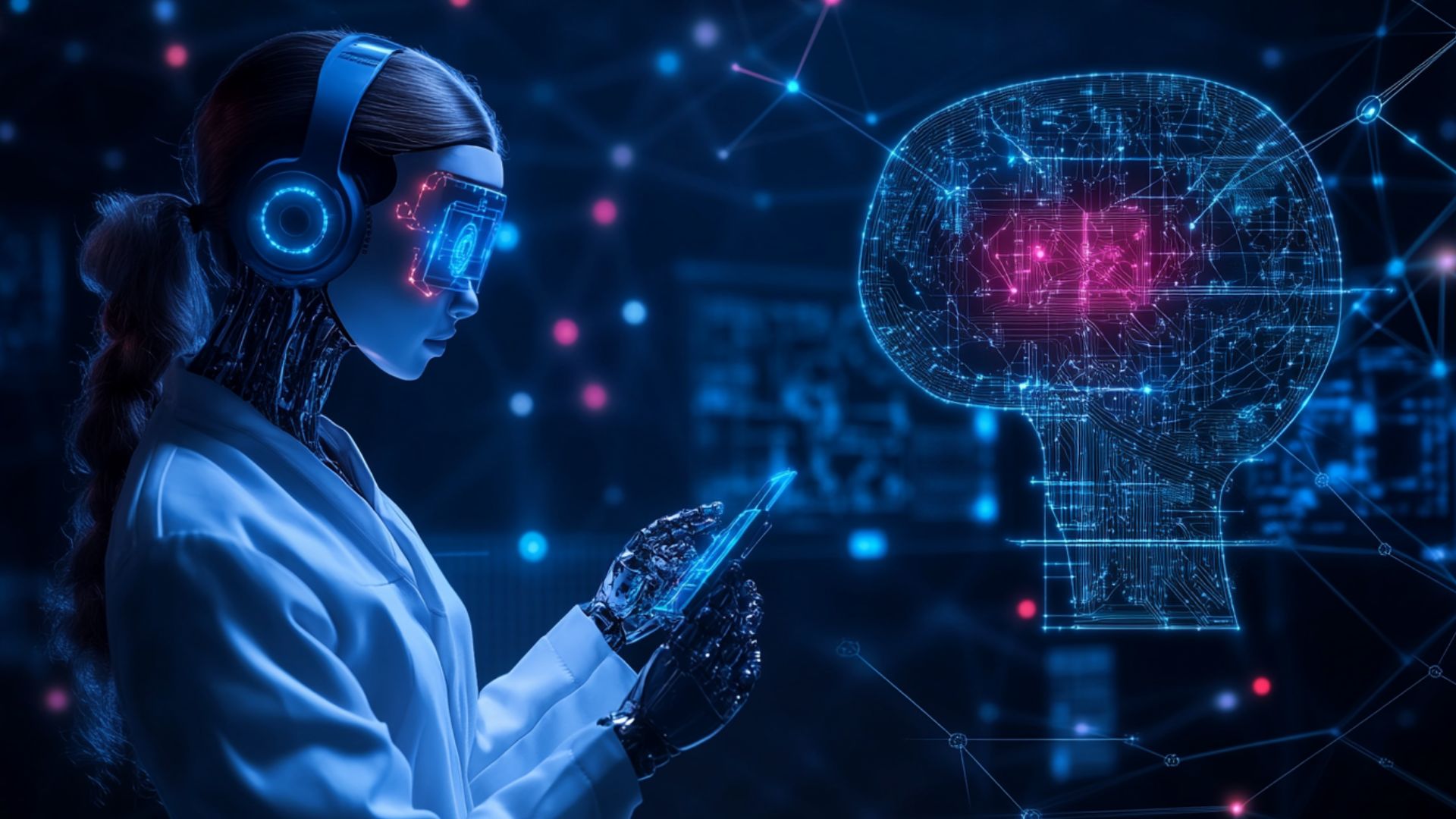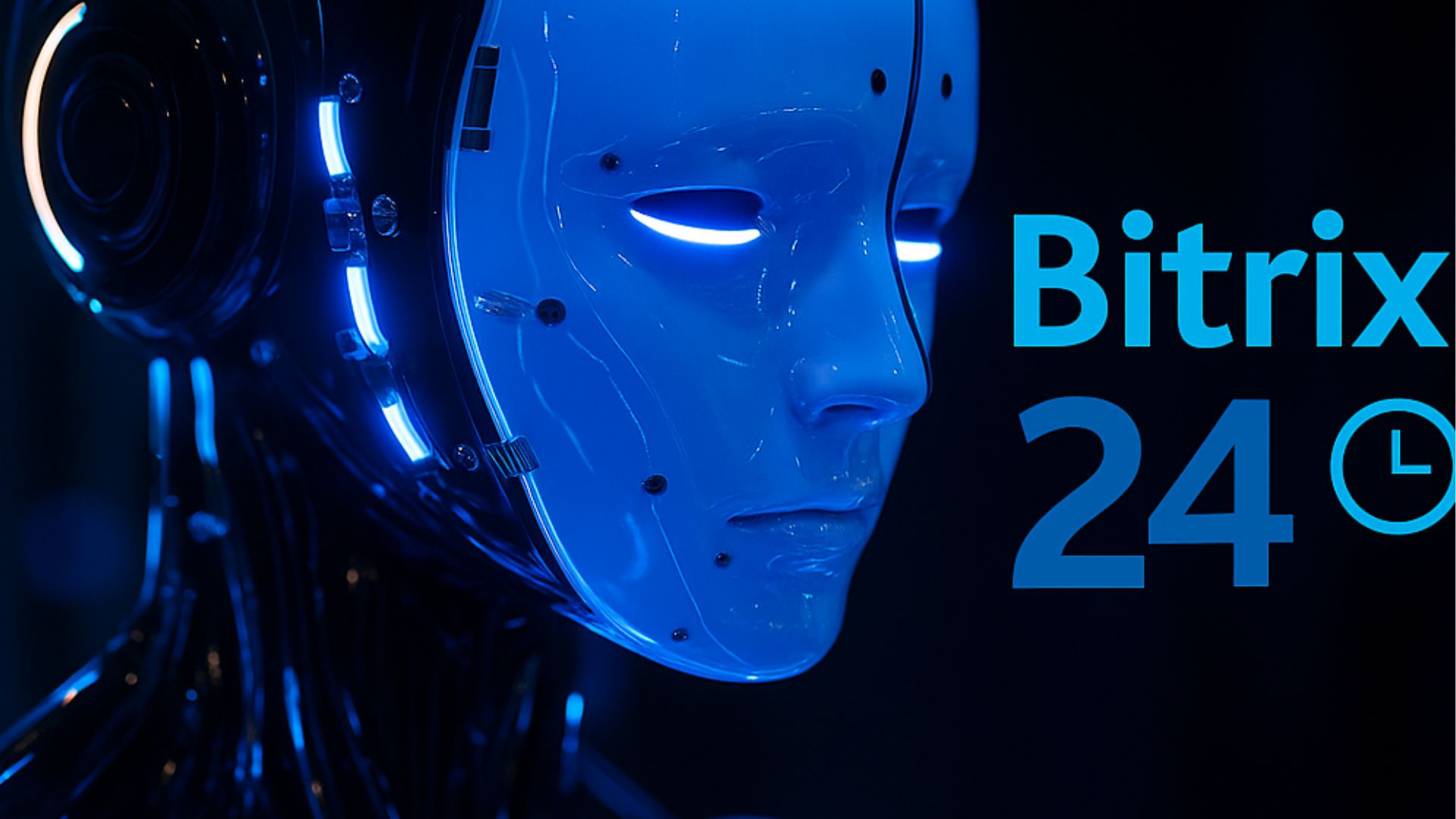What is Machine Learning?

What is machine learning (ML)? It's a method that creates algorithms that learn from data. Unlike traditional systems that are explicitly programmed, ML models improve over time. They analyze data and identify patterns within it. This enables ML systems to solve complex problems automatically. Many different algorithms are available, each suited for specific tasks.
Today, machine learning technologies are advancing rapidly. They have enormous potential for solving complex problems. In the future, ML will significantly impact many aspects of our lives. Before examining methods in detail, let's look at ML's history. We'll discuss how it works and explore its applications. We'll also address limitations, including ethical considerations and data quality requirements.
The Core Definition and Purpose of Machine Learning
What does ML mean? Machine learning is a branch of artificial intelligence (AI). It focuses on algorithms that enable computers to learn from data. ML systems improve over time without explicit programming for each scenario. Unlike traditional software, ML finds patterns automatically. It fits into AI by enabling systems to mimic human reasoning. This powers applications like speech recognition and image analysis.
The primary goal of ML is creating models that identify patterns. These models make decisions with minimal human help. They analyze data to predict outcomes or classify information. Models learn from training data to handle new situations. For instance, an ML model can predict sales trends. It can also detect spam emails by finding patterns in data.
What is machine learning and key purposes:
- Pattern Recognition. Detecting trends or outliers in data, such as identifying fraudulent transactions.
- Prediction. Forecasting future results, such as weather patterns or market trends.
- Automation. Enabling systems to make independent decisions, like autonomous vehicles navigating traffic.
- Optimization. Enhancing efficiency by streamlining processes such as logistics and supply chain management.
ML processes large datasets quickly and adapts to new data. This continuously improves accuracy over time. This makes it essential across industries like healthcare, finance, and technology.
Types of Machine Learning Methods
What does ML stand for? Machine learning is a broad field within AI. It uses various methods to analyze data. It uses neural networks with multiple layers. These networks process complex data like images or speech. Traditional ML includes simpler statistical models. Deep learning excels in tasks requiring high computational power and large datasets.
Machine learning methods are divided into three main categories:
- Supervised Learning. Uses labeled data to train models that can predict outcomes for new data. For example, classifying emails as spam or legitimate mail. It's used when historical data with known outcomes exists, such as in fraud detection or sales forecasting.
- Unsupervised Learning. Works with unlabeled data to discover hidden patterns, grouping similar data points like customer segmentation in marketing. It's used when no predefined labels are available, such as in clustering analysis or anomaly detection.
- Reinforcement Learning. Trains agents to make decisions by rewarding desired actions and penalizing poor ones. It learns through trial and error, like teaching a robot to navigate obstacles. It's used in dynamic environments such as game playing or autonomous driving.
When comparing machine learning versus deep learning, both use supervised and unsupervised methods. However, deep learning relies heavily on large datasets and complex neural networks.
Supervised Learning in Practice
Machine learning includes supervised learning, which uses labeled data for predictions. Deep learning relies on complex neural networks for tasks like speech recognition. Supervised learning often uses simpler models like logistic regression or support vector machines. Deep learning typically tackles more complex data types, such as videos and high-resolution images.
Supervised learning trains models using labeled datasets. Each data point has inputs paired with correct outputs, called labels. The model learns to map inputs to outputs. It adjusts parameters to minimize prediction errors. During training, it refines predictions using labeled examples. After training, the model predicts outcomes for new, unseen data. This method works best when reliable labeled data is available.
Key applications of modelos de machine learning include:
- Spam Filters. Email platforms train models on datasets labeling emails as "spam" or "legitimate." The model identifies suspicious keywords and patterns to classify incoming emails automatically.
- Fraud Detection. Financial institutions use labeled transaction data (marked as "fraudulent" or "legitimate") to train models that detect anomalies, such as unusual purchase patterns, to flag potential fraud in real-time.
- Image Classification. Using labeled images (e.g., "cat" or "dog"), models learn to recognize objects in new photos. This technology powers applications like facial recognition and medical imaging diagnostics.
- Customer Churn Prediction. Businesses train models on customer data labeled as "churned" or "retained" to predict which customers are likely to leave, enabling the development of effective retention strategies.
Unsupervised and Reinforcement Learning Explained
Machine learning platforms use modern software frameworks. They support the creation and deployment of machine learning models. Examples include TensorFlow, PyTorch, and Google Cloud AI. These platforms simplify data handling, model development, and testing processes. Modelos de machine learning of various types enable systems to learn without direct supervision.
Unsupervised learning analyzes unlabeled data to uncover hidden patterns and structures. Algorithms group similar data points or reduce data complexity without predefined categories. For instance, in customer segmentation, customers are grouped by behavioral patterns.
Reinforcement learning trains agents by providing rewards for good actions. It also gives penalties for poor ones. The agent learns optimal behaviors through trial and error in an interactive environment. In gaming, it enables AI to develop winning strategies like DeepMind's AlphaGo. In robotics, it helps machines learn complex tasks. For example, robots learn to navigate through obstacles.
| Learning Type | Data Type | Key Mechanism | Example Use Case |
| Unsupervised Learning | Unlabeled Data | Clusters data and finds patterns | Customer Segmentation |
| Reinforcement Learning | Environment-Based | Rewards guide trial-and-error learning | Game AI, Robotics |
How Machine Learning Works Step by Step

Machine learning software development involves designing and building intelligent systems. These systems can learn and adapt to new information. What does ML mean in practice? It refers to systems that learn from data. They make accurate predictions and informed decisions. These systems improve over time as they're exposed to more information. A computer optimized for machine learning requires robust processing power, typically featuring high-performance CPUs and often GPUs to accelerate computations. These components are essential for handling large datasets and training complex models efficiently.
The ML workflow follows a structured process that includes data collection, preprocessing, model training, and evaluation to ensure that models perform reliably in real-world applications. Here are the key steps:
- Data Collection. Gather relevant data from sources like databases, sensors, or web APIs. Quality data is critical for building accurate models.
- Data Preprocessing. Clean data by removing errors, duplicates, or inconsistencies. Normalize or scale data for consistency and handle missing values appropriately.
- Feature Engineering. Select or create meaningful features from raw data. For example, extract purchase frequency and average order value for customer analysis.
- Model Selection. Choose an appropriate algorithm, such as decision trees, neural networks, or support vector machines, based on the problem type and data characteristics.
- Training and Validation. Train the model on a subset of data, then validate it on separate data to check accuracy and prevent overfitting through proper regularization techniques.
- Deployment and Monitoring. Deploy the model in real-world applications, such as recommendation systems or spam filters. Continuously monitor performance and update with new data as needed.
This workflow ensures models are robust and effective for practical applications. Machine learning software development often uses tools like TensorFlow, PyTorch, or Scikit-learn. A powerful computer for ML accelerates training and data processing significantly. Each step builds toward creating a model that generalizes well to new data. This enables efficient solutions for problems like fraud detection, medical diagnosis, or recommendation systems.
Data and Features. The Fuel of ML Models
High-quality, relevant data serves as the foundation of successful machine learning development. Without it, even sophisticated models fail to deliver accurate predictions. A computer designed for machine learning with strong processing capabilities can handle large datasets effectively. However, data quality remains most important. Data fuels models, while carefully selected features drive performance.
Key aspects of data and feature management include:
- Data Quality. Ensure data is complete, accurate, and unbiased. Clean errors and inconsistencies before model training to prevent poor performance.
- Data Relevance. Collect data that directly relates to the task. For fraud detection, use transaction history and user behavior, not irrelevant demographic information.
- Feature Selection. Identify key variables that influence outcomes, such as purchase frequency for marketing models, while discarding irrelevant features.
- Feature Engineering. Create new, more informative features from existing data, such as calculating average spending per month from transaction records.
- Scalability. Use computers optimized for computer machine learning to process large datasets efficiently and ensure optimal performance during training and inference.
In machine learning software development, tools like Pandas, NumPy, and Scikit-learn streamline data handling. They also help with feature engineering processes. High-quality data combined with intelligent feature selection enables models to generalize effectively. This drives success in applications like recommendation systems, medical diagnostics, and financial risk assessment. Poor decisions in data preparation can undermine even the most advanced algorithms.
Training and Evaluating ML Models
Computers with powerful processors and GPUs significantly accelerate model training processes. Software frameworks like Scikit-learn, TensorFlow, and PyTorch streamline the building, training, and testing processes. They make machine learning models more accessible. Training and evaluation are fundamental to creating reliable, robust machine learning systems.
Training involves feeding a model labeled data so it can learn underlying patterns. The model adjusts its internal parameters to minimize prediction errors. This happens through iterative optimization processes. Testing uses a separate dataset to evaluate how well the model generalizes. This tests performance on new, unseen data. Overfitting occurs when a model memorizes training data, including noise. Consequently, it performs poorly on new data. Techniques like regularization, cross-validation, and proper data splits help prevent overfitting. A robust ML development system supports these best practices. It streamlines data management, model evaluation, and deployment workflows.
Key evaluation metrics assess model performance:
- Accuracy. Measures the percentage of correct predictions. Best suited for balanced datasets, such as classifying product reviews as positive or negative.
- Precision. Calculates true positives among all positive predictions. Critical for applications like spam filters, where minimizing false positives is important.
- Recall. Measures true positives against all actual positive cases. Crucial in medical diagnostics where detecting all disease cases is essential.
- F1-Score. Combines precision and recall for balanced evaluation. Particularly useful for imbalanced datasets, such as fraud detection where fraudulent cases are rare.
Common Applications of Machine Learning

Computers equipped with robust GPUs are essential for processing large datasets. They're also crucial for training complex machine learning models efficiently. Frameworks like TensorFlow, PyTorch, and Scikit-learn simplify the development process. They make building, training, and deploying models more accessible and scalable across organizations. Machine learning is revolutionizing industries by uncovering hidden patterns in data. It generates actionable insights that enhance decision-making and drive innovation.
Real-world applications span numerous sectors including healthcare, finance, retail, marketing, and transportation. In these areas, ML improves outcomes, optimizes operations, and enables technological breakthroughs.
Key real-world applications of ML development systems include:
- Healthcare (Medical Diagnostics). ML enhances diagnostic accuracy by analyzing medical images, patient records, and clinical data. Models can detect cancer from radiological scans or predict patient risk factors. This accelerates diagnosis and improves treatment outcomes.
- Finance (Risk Assessment). Machine learning predicts financial risks such as loan defaults and credit card fraud. Models analyze transaction patterns, economic indicators, and customer behavior. This helps assess creditworthiness and flag suspicious activities in real-time.
- Retail (Recommendation Systems). ML drives personalized recommendation engines. These analyze purchase history and browsing behavior to suggest relevant products. This technology powers platforms like Amazon and Netflix. It significantly boosts sales and customer engagement.
- Marketing (Customer Analytics). ML reveals deep customer insights through behavioral analysis and segmentation. Models group customers for targeted campaigns and analyze social media sentiment. This refines marketing strategies and improves campaign effectiveness.
- Autonomous Vehicles. ML enables self-driving cars to navigate safely. It processes sensor data, detects obstacles, and makes real-time driving decisions. Reinforcement learning algorithms continuously optimize driving behavior and safety protocols.
Computers optimized for machine learning efficiently handle intensive computations. These are required for training models on medical, financial, or transportation data. ML development systems streamline the creation, testing, and deployment of these sophisticated models. Machine learning's ability to discover complex patterns is transforming industries. In healthcare, it saves lives through early disease detection. In finance, it reduces risks and prevents fraud. In retail and marketing, it creates personalized customer experiences. In transportation, it enhances safety and efficiency. As data volumes continue to grow, ML's role expands, driving innovation and competitive advantage across all sectors.
Challenges and Limitations of Machine Learning
Machine learning refers to algorithms that learn patterns from data. They don't require explicit programming for every possible scenario. Development systems using frameworks like Scikit-learn, TensorFlow, and PyTorch support model creation. However, they face significant challenges related to data privacy, bias, and model interpretability.
Key challenges in ML development systems include:
- Data Privacy. Machine learning requires large datasets that often contain sensitive personal information. Data breaches risk exposing confidential medical records, financial information, or personal details. Strict regulations such as GDPR and CCPA demand secure, compliant data handling practices.
- Bias and Fairness. Models can perpetuate and amplify biases present in training data. For example, biased hiring datasets may favor certain demographic groups. This leads to discriminatory outcomes in automated recruitment systems.
- Model Interpretability. Complex models, especially deep neural networks, often operate as "black boxes." Their decision-making processes are difficult to understand or explain. This lack of transparency undermines trust in critical applications. Examples include medical diagnosis or loan approvals.
- Generalization Limitations. Models may fail when applied to new contexts or environments. A model trained on urban traffic patterns may perform poorly in rural settings. This happens due to different driving conditions and behaviors.
Addressing These Challenges:
Researchers and practitioners are actively developing solutions to these problems. For privacy protection, federated learning enables model training on distributed devices. This keeps data local and secure. Differential privacy techniques add controlled noise to protect individual privacy. They maintain model utility at the same time.
To reduce bias, fairness-aware machine learning tools help audit datasets and adjust algorithms. They promote equitable outcomes across different groups. Model interpretability is improving through techniques like LIME and SHAP. LIME stands for Local Interpretable Model-agnostic Explanations. SHAP means SHapley Additive exPlanations. These provide clear explanations for individual predictions.
For better generalization, transfer learning adapts pre-trained models to new domains. Diverse testing datasets help ensure model robustness across different scenarios. Modern ML development systems increasingly incorporate these solutions. They promote the development of more ethical, transparent, and reliable machine learning models.
Advances in privacy-preserving techniques, bias mitigation strategies, and explainable AI are making machine learning more trustworthy. They're also making it more effective. By systematically addressing these challenges, the field continues to evolve toward fairer, more reliable systems. These systems foster trust and enable responsible innovation across various sectors.


